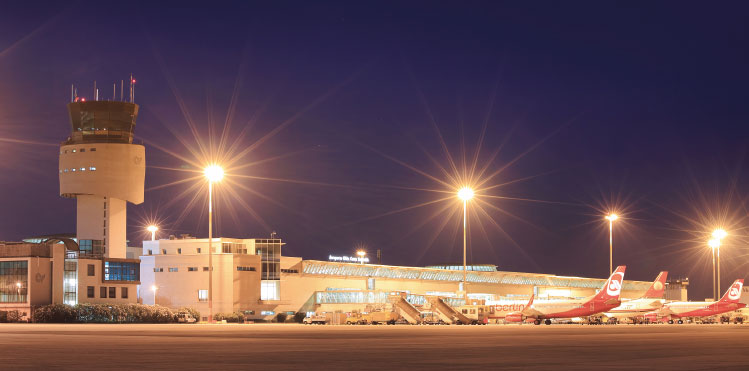
The island of Sardinia is becoming increasingly competitive as a tourist destination. Olbia Costa Smeralda Airport’s traffic has been growing steadily since 2010, with a record 2.2 million passengers in 2015. A further 15% growth is forecast this year.
2016 is a turning point for Olbia Costa Smeralda Airport. Its CEO Silvio Pippobello outlines the airport’s infrastructure development plans, and its strategies to enhance the passenger experience, to Marta Dimitrova.
Sardinia is no longer the “best kept secret in the Mediterranean”. “It is becoming a mature tourist destination among European travellers, perceived as sunny, safe, with an uncontaminated nature, and rich in history, tradition and gastronomic excellence,” enthuses Silvio Pippobello, CEO Olbia Costa Smeralda Airport.
This year seems to be a turning point not only for the airport, but also the entire tourism industry of the region. Passenger numbers have been growing steadily since 2010, with a record 2.2 million in 2015, and the airport’s team is positive that growth will continue throughout 2016. In fact, an upsurge in passenger growth is expected, with a double-digit increase of 15% forecast this year.
So far in 2016, Olbia Costa Smeralda has added 16 new routes to its network, which already counted 90 connections with over 30 airlines.
The airport is constantly aiming to deliver the best quality of service to its customers, and improving the passenger experience throughout all airport processes is a key goal. “Our strategy has been focused on three main streams: quality of services (aviation and non-aviation), airline network diversification, and strong integration with the territory and tourism stakeholders,” Pippobello explains.
In 2014, the airport carried out an extensive commercial development plan with the aim to maximise its profitability by combining excellence in airport operations and commercial space optimisation, and by adapting its value proposition. Last year it opened three new food & beverage outlets. With nine F&B points in total, the airport clearly strives at differentiating its offer and meeting travellers’ expectations. “The objective for the next two years is to boost non-aviation revenues to above 50% of the total, from the current 45%,” Pippobello comments.
The focus on the traveller experience has led to several innovative initiatives. One example is the “Airport Angels” project – dedicated staff available during peak hours who are trained to assist passengers. Another creative way to enhance spirits at the airport is “Artport”, a permanent art gallery with new exhibitions every month. Starting from this year, Olbia has also launched a social media contest called “Busk in Olbia Airport’, allowing local performers, voted for online, to perform in front of passengers to create a sense of excitement in the terminal.
Olbia is one of the most seasonal airports in Italy, resulting from peak leisure demand. 70% of traffic is concentrated in the four summer months. However, the airport has identified markets with traffic potential during the mid-low season and is working hard to boost demand with various marketing activities, such as participating in tourism trade fairs, and online promotions.
“In this particular moment, we see strong potential from the Scandinavian market, especially from Finland which is currently unserved, and from Switzerland,” Pippobello notes. “The latter has experienced strong growth in the last four years and we believe there is space for further development.”
Each year the airport publishes an incentive scheme based on its network development strategy, in order to then target unserved and underserved routes with high potential and establish the carriers willing to operate those routes.
Average annual traffic growth of 5% is forecast over the next five years, and infrastructure developments are planned to meet future demand. Work has already started on a 250m runway extension. “We are planning a gradual terminal enlargement that will align available space with traffic growth projections,” Pippobello adds. “This infrastructure improvement, besides increasing safety levels, will further enlarge our commercial opportunities, allowing long-haul operations with widebody aircraft.”
Olbia’s focus as it approaches its busiest summer months is on being prepared to deliver the highest quality of service to passengers. “It will be important to combine high operational standards, avoiding congestion that might reduce the available time in the commercial areas, and thus increase passenger penetration,” Pippobello concludes.







